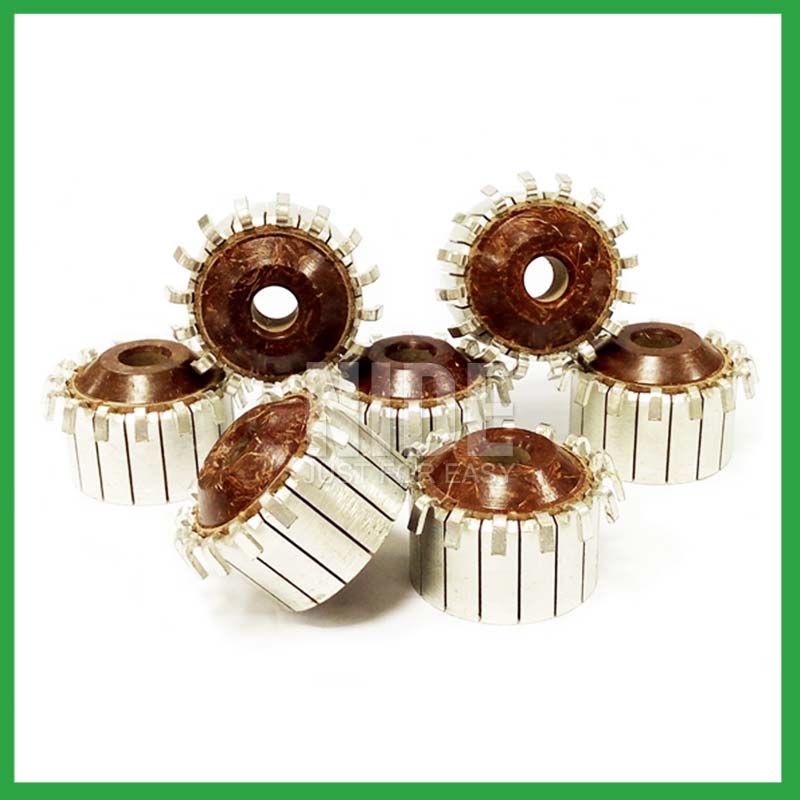PRODUCTS
CONTACT US
Ningbo Nide International Co., Ltd.
一一
· Contact person:Jack Zeng
· Mob/Whatspp/WeChat:0086-13738869026
· Email:emarketing@nide-group.com;marketing4@nide-group.com
· Add:No. 169, Wohushan Road, Daqi Subdistrict, Beilun District, Ningbo, China

The commutator is a crucial component found in certain types of electrical generators, particularly in direct current (DC) generators and motors. It plays a key role in the conversion of electrical energy to mechanical energy or vice versa.
Information needed for commutator inquiry:
1. Commutator dimension: OD, ID, total height, and copper height, bar number.
2. Commutator type: hook type, raiser type or planner
3. Copper material: Agcu/ Cu
4. Commutator applications
5. Required quantity
It will be better if customer could send us detailed drawing including below information.
Nide produces more than 1200 different types of electric motor stator and armature rotor brush commutator, including hook type, riser type, shell type, planar type, ranging from OD 4mm to OD 150mm and we are professional in manufacturing commutator for many years. The commutators are widely applied to automotive industry, power tools, household appliances, and other motors.If our existing models are not suitable for you, we could also develop new tooling according to your drawing and samples.
What is the commutator of a generator and its role in a DC generator?
The commutator of a generator is an important component in DC generators and DC motors. Its role in DC generators is crucial for converting mechanical energy into electrical energy.
Commutator in generator:
A commutator is an open ring or cylindrical component composed of segments, usually made of copper or other conductive materials. These segments are insulated from each other. The commutator is installed on the rotor or armature shaft of the generator and rotates accordingly.
Role in DC generators:
Rectifiers play a crucial role in DC generators:
Current direction reversal: In a DC generator, the armature composed of coils rotates in a magnetic field. When the armature rotates, it generates alternating current (AC) voltage in the coil. Commutators play a crucial role in converting alternating current into direct current (DC).
Contact switching: The brush is usually made of carbon and pressed onto the commutator blade. These brushes are connected to external circuits. When the armature rotates, the commutator blade contacts the brush. When the coil in the armature is perpendicular to the magnetic field line, the commutator plate switches the direction of the current. This action ensures that the generated current flows into the external circuit in a continuous and unidirectional manner, thereby generating direct current.
Output consistency: The commutator can reverse the current direction at specific intervals, ensuring that the output of the DC generator remains stable and constant DC voltage, which is crucial for many practical applications.

